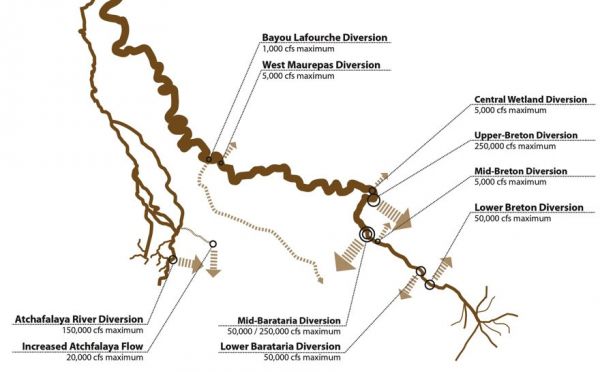
Over the course of the 50-year Master Plan, officials say the sediment diversion projects in the document could create up to 300 square miles of new marsh at a cost of $4.1 billion, using a mix of funding ranging from federal dollars to offshore energy royalties.
Another $20 million is being dedicated to a system of dredging and pipelines. Officials say there will be controls that track everything from nutrients to sediment levels, and the devices will only be opened and utilized at peak times.
In other words, they will not flow freely.
One of the largest planned diversions will be placed near Braithwaite on Plaquemines Parish’s east bank. It’s the Upper-Breton Diversion, capable of 250,000 cubic feet per second.
It’s a large flow compared to the state’s previous mega diversion at Caernarvon, which touts a maximum flow of freshwater at 8,000 cubic feet per second.
Other planned diversions and the maximum flow rates include:
• Bayou Lafourche —1,000 cfs
• West Maurepas — 5,000 cfs
• Central Wetland — 5,000 cfs
• Upper-Breton —250,000 cfs
• Mid-Breton — 5,000 cfs
• Lower Breton —50,000 cfs
• Mid-Barataria — 250,000 cfs
• Lower Barataria — 50,000 cfs
• Atchafalaya River — 150,000 cfs


